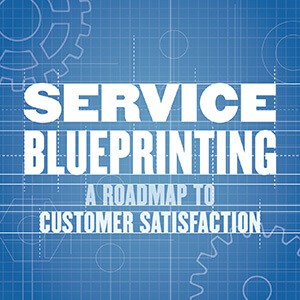Service Blueprinting: A Roadmap to Customer Satisfaction
In a market where customer service and positive interactions are of increasing importance, it is critical for agribusinesses to understand and adapt to these demands. Organizations tend to rely on “the way things have always been done” rather than assessing their customer service strategy and understanding how to reduce inefficiencies.
The Purdue University Center for Food and Agricultural Business recently had the opportunity to discuss the importance and implications of service blueprinting with Dr. Douglas Olsen, associate professor at the W.P. Carey School of Business and Thunderbird School of Global Management at Arizona State University. The discussion with Dr. Olsen revealed inefficiencies some organizations may be experiencing and identified strategies firms can adopt to increase customer satisfaction.
What is service blueprinting?
For many years, companies have been able to identify the inefficiencies that exist within their production practices but have never worked to see how they could make more effective use of resources when it comes to customer service. Service blueprinting allows organizations to do exactly this by defining what service excellence looks like and putting a plan in place to meet or exceed customer expectations. It is difficult to find a company today that is solely focused on producing a product. Even for product-centric companies, their processes likely still involve some level of customer service whether it’s taking customer orders or dealing with issues of customer satisfaction. In service-centric companies, the importance of customer service permeates even more. For these reasons, service blueprinting is an important tool to implement in both product- and service-centric organizations to meet customer needs.
Why is it important for an organization to blueprint their services?
Services are complex—they lack tangibles that physical products possess. With services, customers determine whether an interaction between themselves and a company is good or bad. When an organization and a customer interact, a service takes place and presents the opportunity for either a customer pain-point or a positive outcome. Service blueprinting allows firms to identify and implement ways to reduce customer pain-points and increase positive interactions. It is exciting to be able to take something as vague as customer service, dive into issues within an organization, and emerge with a plan as to what key processes need modification in order to increase efficiency and benefit customers.
What type of gaps have been identified by companies you have worked with across different industries? How did they moved forward with improvements?
Companies often realize that the delivery of service is much more complex than originally believed before they began service blueprinting. Diagramming the blueprinting process allows organizations to gain an accurate understanding of who is responsible for what in a service, where potential pain-points lie and what actions can be implemented to remove stress for the customer. Through this progression, organizations find that though tasks are being accomplished, there is often no clear ownership of responsibilities or that various people are doing the same task in an unstandardized method. It also shows how each task impacts the entire process. In these situations, service blueprinting guides companies to initiate effective conversations focused on determining specific acions to increase customer satisfaction.
What significant impacts have you heard from companies that have implemented ideas from blueprinting?
In the digital ag era, customers are expecting a higher level of interactivity and personalization in their interactions but often don’t want to deal with a human to get it. This means that where it is efficient and preferred by the customer, technology can take over. In other cases, entire processes have been revisited to remove unnecessary steps or add in steps that enhance the process. Some of these steps are customer-facing while others are support-related. The greatest impact, however, is that companies now have a tool to diagram their service process in a meaningful way. They can feel confident in knowing that they have a solid grasp on factors that determine customer satisfaction and loyalty.
Beyond the Blog
Learn more about service blueprinting and how it can be implemented in your organization from Dr. Olsen at the 2020 ARA Management Academy. Additional faculty from Arizona State University and Purdue University will be presenting on other topics such as marketplace trends and examining profitability. The program will be held at Arizona State University on January 28-30, 2020. Interested? Register now to reserve your seat!
Tags: Agribusiness, ARA Management Academy, Customer Satisfaction, Customer Service, Food, Management, Service Blueprinting, Strategy
RELATED POSTS:
Optimizing Sales Management: Knowledge, Coaching and Continuous Improvement
While we used to think that exceptional salespeople possessed an innate gift, recent data suggests the impact of today’s sales managers in nurturing and refining this gift to unlock its fullest potential.
A great moment for value-based sales in agribusiness
Value-based sales can empower companies to craft compelling value propositions, understand the customer’s business model and effectively communicate to stakeholders.
How can big data empower the development of new products?
Data is one of the most powerful resources for a company. It enables accurate decision-making and minimizes risk, ensuring greater revenue and sustainable growth.
